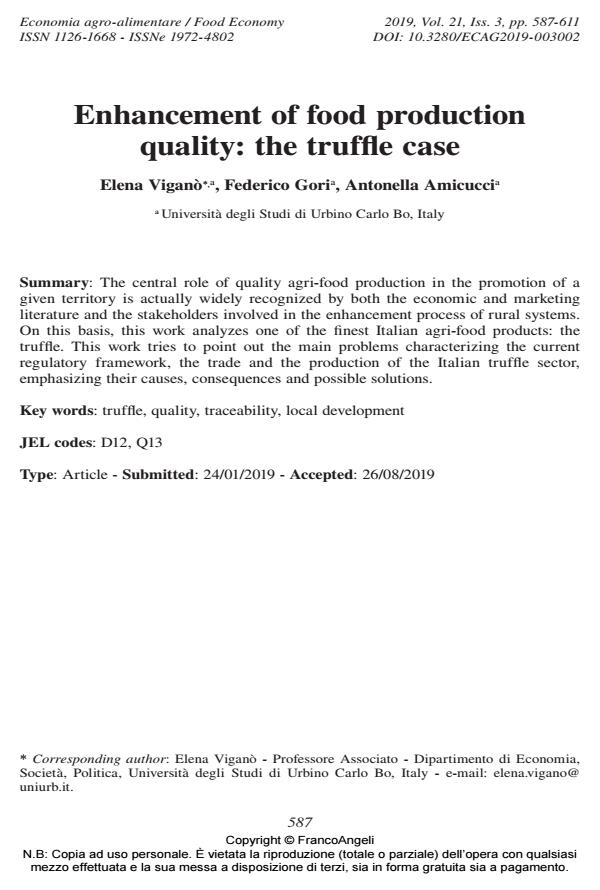Enhancement of food production quality: the truffle case
Titolo Rivista ECONOMIA AGRO-ALIMENTARE
Autori/Curatori Elena Viganò, Federico Gori, Antonella Amicucci
Anno di pubblicazione 2020 Fascicolo 2019/3
Lingua Inglese Numero pagine 25 P. 587-611 Dimensione file 194 KB
DOI 10.3280/ECAG2019-003002
Il DOI è il codice a barre della proprietà intellettuale: per saperne di più
clicca qui
Qui sotto puoi vedere in anteprima la prima pagina di questo articolo.
Se questo articolo ti interessa, lo puoi acquistare (e scaricare in formato pdf) seguendo le facili indicazioni per acquistare il download credit. Acquista Download Credits per scaricare questo Articolo in formato PDF

FrancoAngeli è membro della Publishers International Linking Association, Inc (PILA)associazione indipendente e non profit per facilitare (attraverso i servizi tecnologici implementati da CrossRef.org) l’accesso degli studiosi ai contenuti digitali nelle pubblicazioni professionali e scientifiche
The central role of quality agri-food production in the promotion of a given territory is actually widely recognized by both the economic and marketing literature and the stakeholders involved in the enhancement process of rural systems. On this basis, this work analyzes one of the finest Italian agri-food products: the truffle. This work tries to point out the main problems characterizing the current regulatory framework, the trade and the production of the Italian truffle sector, emphasizing their causes, consequences and possible solutions.
Parole chiave:Struffle, quality, traceability, local development
Jel codes:D12, Q13
- Status of truffle science and cultivation in North America Mark D. Coleman, Shannon Berch, Gregory Bonito, Brian Allen, Ellie Andrews, Elva T. Arechiga Carvajal, Stephen P. Cook, Cameron D’Amours, Roberto Garibay-Orijel, Gonzalo Guevara, Patrick Hatzenbuehler, Barbara Hawkins, Robert Heinse, Gavin Kernaghan, Charles Lefevre, Benjamin Lemmond, Inga M. Meadows, Scott Oneto, Jyotsna Sharma, Daniel G. Strawn, Joey B. Tanney, Aziz Türkoğlu, Jessie Uehling, Jason Winfree, Matthew E. Smith, in Plant and Soil /2025 pp.625
DOI: 10.1007/s11104-024-06822-4
Elena Viganò, Federico Gori, Antonella Amicucci, Enhancement of food production quality: the truffle case in "ECONOMIA AGRO-ALIMENTARE" 3/2019, pp 587-611, DOI: 10.3280/ECAG2019-003002